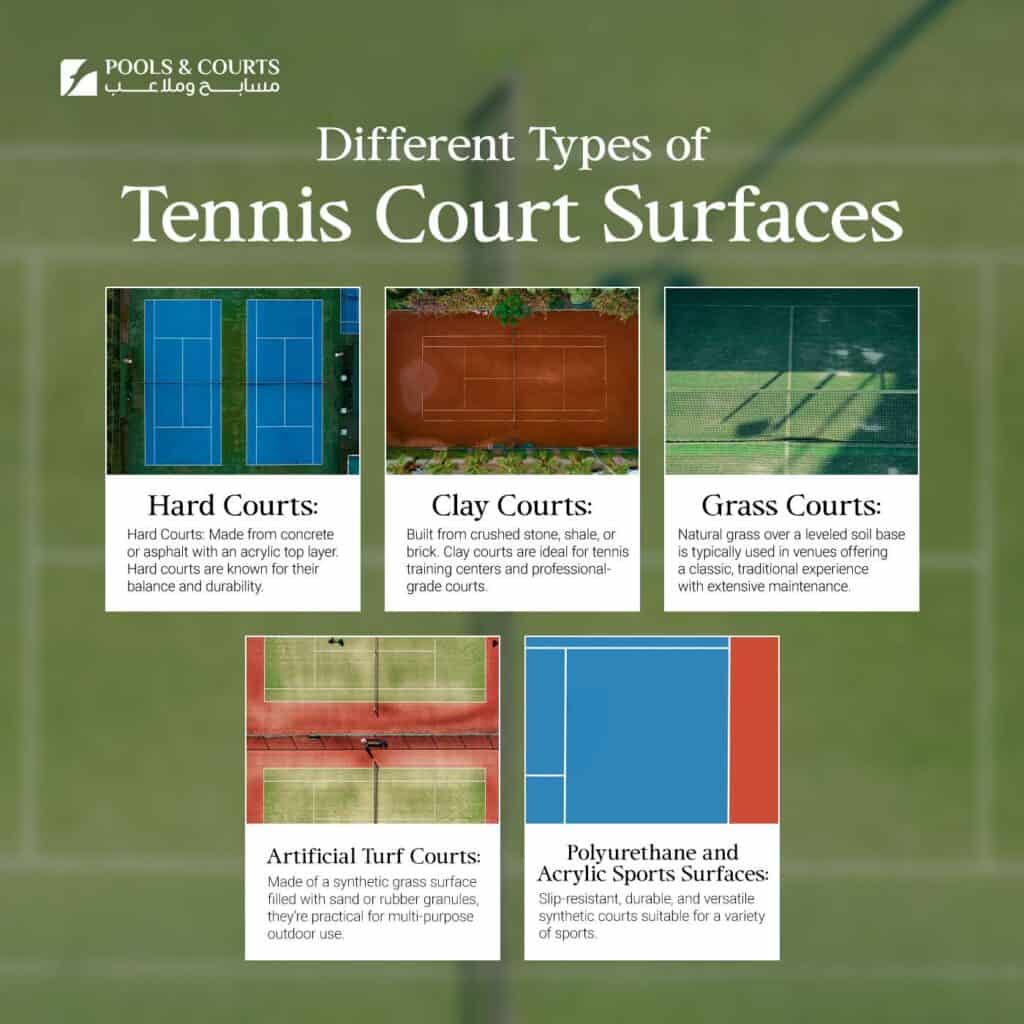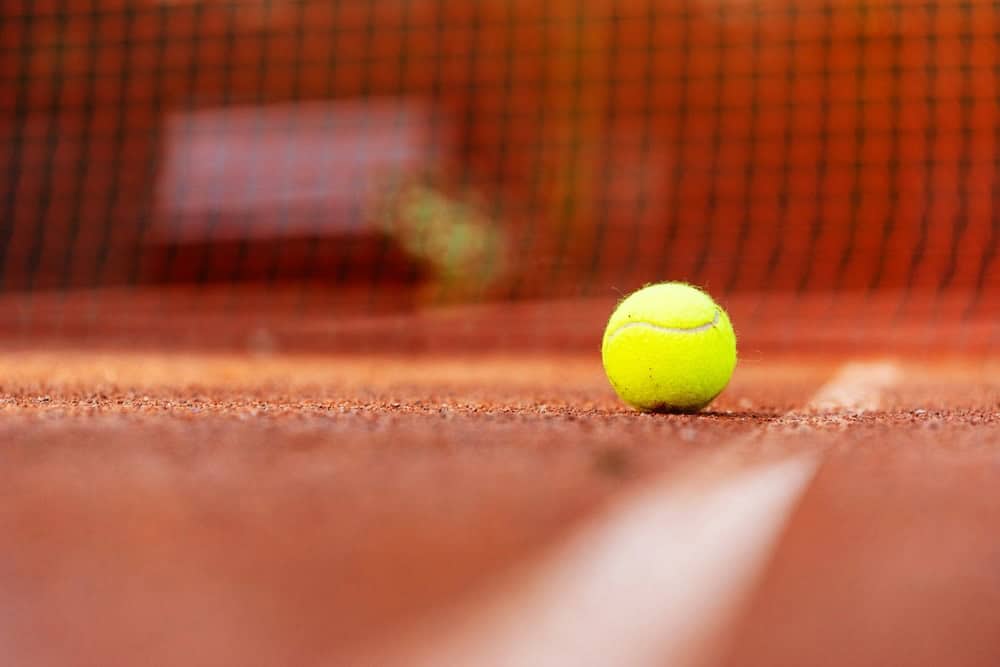Constructing Different Types of Tennis Courts
In tennis, choosing the right surface to play significantly affects safety, performance, and long-term value. Pools & Courts specializes in tennis court construction in Saudi Arabia. We use durable materials well-suited to the region’s climate and your specific usage needs.
Let’s find out the different types of tennis courts, how each surface performs, and what factors to consider before construction.
5 Different Types of Tennis Courts
Below is a breakdown of the most common types of tennis courts:
1. Hard Courts
Performance: Medium ball speed and predictable bounce
Hard courts are made from concrete or asphalt with an acrylic top layer. They’re known for their balance and durability and are one of the most versatile tennis court surfaces suitable for players and skill levels. They’re ideal for recreational clubs, schools, and public facilities and require moderate maintenance, such as regular cleaning and surface checks.
2. Clay Courts
Performance: Slower gameplay with high bounce
Clay courts are built from crushed stone, shale, or brick and are more suited for slow playing favored by advanced players. They’re great for developing footwork and long rallies and are ideal for tennis training centers and professional-grade courts. However, they’re not suitable for high-traffic areas or low-maintenance settings. Clay courts require high maintenance, such as daily brushing, watering, and surface leveling.
3. Grass Courts
Performance: Fast pace, low and inconsistent bounce
Natural grass over a leveled soil base is typically used in prestigious venues, such as luxury residences and exclusive sports clubs in Saudi Arabia. It offers a traditional, classic look and a fast game style. Grass courts need extensive maintenance with frequent mowing, irrigation, and surface repair.
4. Artificial Turf Courts
Performance: Medium-fast and moderate bounce
Artificial turf courts are made of a synthetic grass surface filled with sand or rubber granules. They offer an all-weather surface that mimics natural grass without the high upkeep, which makes them a practical choice for multi-purpose outdoor use and year-round play. They require low to moderate maintenance, such as periodic grooming and infill replacement.
5. Polyurethane and Acrylic Sports Surfaces
Performance: Custom bounce, stable grip, and weather resistance
Polyurethane or PU and acrylic surfaces are slip-resistant, layered synthetic courts suitable for various sports. These surfaces are durable, cost-effective, and versatile. They’re well-suited for schools, community clubs, and developments in Saudi Arabia’s harsh climates because they’re easy to clean and resilient under heavy use.

Why Does Tennis Court Surface Type Matter?
The surface of a tennis court affects how the game plays and how well the court performs over time. The wrong surface can lead to premature wear, player fatigue, or injury. You need to choose your tennis court surface carefully for the following:
- Gameplay speed and ball bounce: Some surfaces slow the game down, while others allow for faster shots. Different materials also affect the ball’s bounce.
- Injury prevention: The shock-absorption property of the court’s surface is a major factor to consider. Softer surfaces may be easier on the body, while harder surfaces may lead to joint stress.
- Maintenance needs: Natural materials often require more upkeep than synthetic or concrete options.
- Longevity and durability: A well-built surface using the right materials will last longer and require fewer repairs.
- Environmental suitability: Some surfaces handle heat, humidity, and dust better than others, which is a crucial point when building in Saudi Arabia.

Factors to Consider When Choosing a Tennis Court Surface
Before starting construction, it’s important to assess several factors that can affect the court type, design, and use:
- Player age and skill level: Beginners may benefit from surfaces with a higher bounce or softer impact, while experienced players may prefer faster surfaces.
- Climate and environment: Choose materials that hold up well in Saudi Arabia’s dry, hot conditions.
- Space and location: The court size, orientation, and surrounding environment influence surface selection and layout.
- Budget and maintenance: Consider the initial construction costs and ongoing care requirements.
- Usage type: A court built for school competitions or club training may differ from one for family use.
Why Choose Pools & Courts for Tennis Court Construction?
At Pools & Courts, we guide our clients through these decisions using expert technical insight, local knowledge, and a deep understanding of performance outcomes. With over 40 years of experience in building courts across Saudi Arabia, we offer comprehensive services from conceptualization to engineering, surfacing, and aftercare.
We use top-grade materials to build UV-stable, impact-resistant, and weather-proof systems that minimize maintenance and maximize court life. We’ll manage the entire project and provide after-sales support, such as cleaning, resurfacing, and maintenance.
Build Your Tennis Court with Pools & Courts
Our team can help you decide on the best tennis court surface for your needs. Pools & Courts combines industry experience with engineering precision to build different types of tennis courts that perform and last. Inquire with us now to discuss the best tennis courts for your property.

